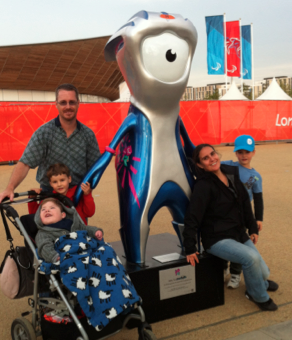Although I’ve posted little about it, you’ll be aware that eQuality Time is a finalist in the Inclusive Technology Prize. Nesta, who are running the prize provided funding and support for us to look at expanding the AzuleJoe software (and by extension, the CommuniKate page sets) into a fully sustainable open source AAC solution.
It’s a very interesting project, and it’s got a lot of potential to deliver help to people who aren’t in a position to make use of exciting AAC systems.
This post is slightly about AzuleJoe, and partly about something I’m turning over in my head about open source systems.
The alert reader will note that the AzuleJoe git repository is very clear:
Disclaimer
This software is designed to let healthcare professionals and interested individuals explore a pageset for use on an AAC device.
It is NOT an AAC device. AAC devices (including software released freely) must be registered as medical devices within the EU. A freely downloadable piece of AAC software must also comply with the relevant medical device legislation in any of the 100s of countries they it can be accessed in.
We’re currently examining this process with a view to eventually registering, but this is a costly and time-consuming process, and we’d like to spend our time on development. Until then, AzuleJoe is for pageset demonstration, exploration, and research.
There are two reasons for this, the first one is sensible – AzuleJoe was first a small piece of code for demonstrating CommuniKate and it will be a while yet (although the Nesta deadline looms) before the released version is robust enough that I’d be comfortable with it being used as a full AAC device.
Medical purpose
Software that has a medical purpose could be a medical device. A medical device is defined in the Medical Device Directive (MDD) as software intended by the manufacturer to be used for the purpose of:
- diagnosis, prevention, monitoring, treatment or alleviation of disease
- diagnosis, monitoring, treatment, alleviation of or compensation for an injury or handicap
- investigation, replacement or modification of the anatomy or of a physiological process
- control of conception
(The relevant european directive is:
93/42/EEC) Digging into it, there are places that explicitly include releasing software for free on the internet.
Very clearly all AAC devices are medical devices and are covered by the law, I have NO problem with this. I think that if there is a device that might be needed to say “Help, there’s a fire!” it’s pretty clear that it should be extremely robust.
On the other hand, there’s a clear tension here… assistive technology is so incredibility individual (a topic, we’ve covered many many times) that it very naturally has people building things that would be incredibly inefficient. The act, as written, seems to indicate that if I asked a, say, Etsy supplier of cushions for a specially designed one for a wheelchair because I knew
If I designed cushions on Etsy, and someone contacted me asking for a specially designed one for a wheelchair because the existing support caused me irritation, I suspect I’d probably say yes. But
93/42/EEC, as written suggests that the customer, if dissatisfied, could sue for the provision of an unregistered medical device.
As the world moves to move and more customisation of consumer goods: 3d printing of objects, custom designed clothes, print-on-demand books the medical device laws become harder and harder to enforce. More to the point, as the world of disability moves from medical model to a co-design social model – classing assistive technology as a medical device looks less and less reasonable from a cultural perspective.
As it happens, I understand that registering a medical device of this type is relatively straight forward (it avoids diagnosis, monitoring or intrusive procedure) so we can fill out the paperwork, pay a fee, and then wait a few months (the solicitor we spoke to suggested nine months). The issue for open source is that the world is bigger than just Europe. To allow downloads from the US, we’d have to go though the US systems, but then there are 196 countries in the world and it’s the developing ones that have the most to gain from open source assistive technology. The solicitor was very clear – to legitimately put out an open source AAC device we would have to do things:
- be very clear that the software was only licence in the EU,
- actively block (presumably by ip filtering) users from other countries
…and that seems to be Draconian and poorly thought out.
We’re going to spend some time thinking this thought and going back to the solicitors – both for our specific case and for the case of assistive technology in general.




